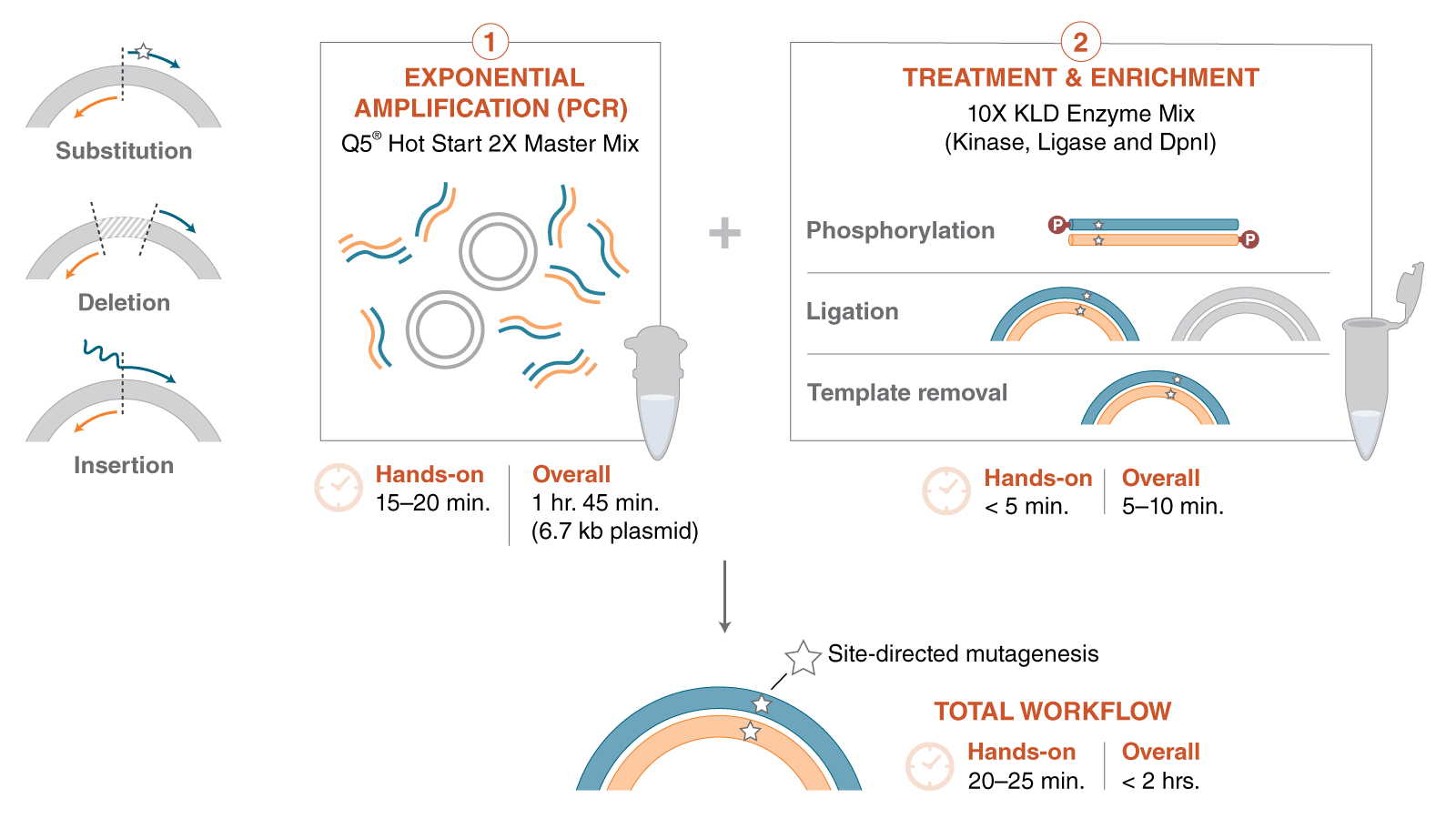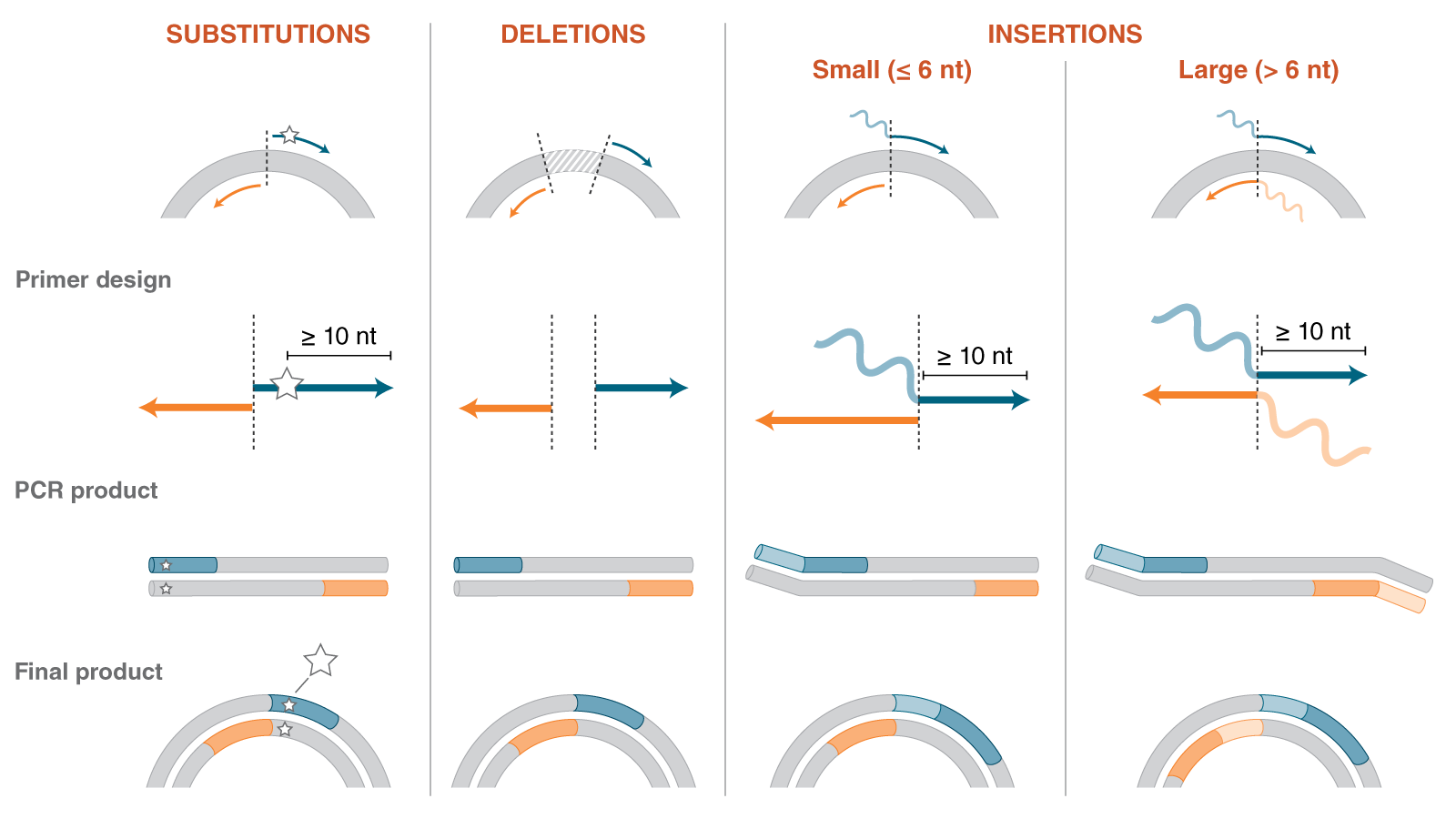

SDM is an in vitro procedure that uses custom designed oligonucleotide primers to confer a desired mutation in a double-stranded DNA plasmid. Formerly, a method pioneered by Kunkel (Kunkel, 1985) that takes advantage of a strain deficient in dUTPase and uracil deglycosylase so that the recipient E. coli degrades the uracil-containing wild-type DNA was widely used. The most widely-used methods do not require any specific modifications or unique E. coli strains and incorporate mutations into the plasmid by inverse PCR with standard primers. For these methods, primers can be designed in either an overlapping or a back-to-back orientation (Figure 1). Overlapping primer design results in a product that will re-circularize to form a doubly-nicked plasmid. Despite the presence of these nicks, this circular product can be directly transformed into E. coli, albeit at a lower efficiency than non-nicked plasmids. Back-to-back primer design methods (as used in NEB’s Q5 ® Site-Directed Mutagenesis Kit (NEB #E0554)) not only have the advantage of transforming non-nicked plasmids, but also allow exponential amplification, generating significantly more of the desired product (Figure 1). In addition, because the primers do not overlap each other, deletions sizes are only limited by the plasmid and insertions are only limited by the constraints of modern primer synthesis. Currently, by splitting the insertion between the two primers, insertions up to 100 bp can routinely be created in one step using this method.
Before primers are designed, it is important to determine which mutagenesis workflow is to be used. Here we present a comparison of four different primer designs (Figure 2) and the types of mutations they enable.
Before you plan your next site-directed mutagenesis experiment, be sure to read through our list of important experimental considerations.
Multi-site Mutagenesis
Efficient and easy multi-site mutagenesis can be accomplished by using assembly methods such as NEBuilder ® HiFi DNA Assembly (Figure 3). Learn more with our application note.



Kunkel, T.A. (1985) Proc Natl Acad Sci U.S.A. 82(2):488-492. PMID: 3881765